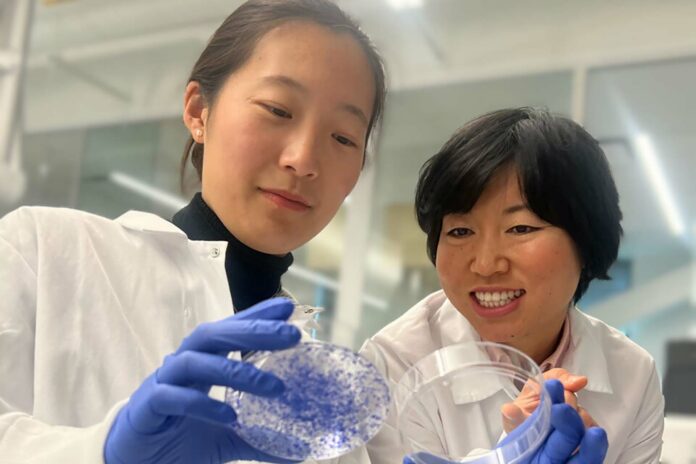Only a small number of patients benefit from immune checkpoint blockade (ICB) therapy, and many types of cancer are not responsive to this treatment. Resistance to ICB can arise due to various mechanisms, including inadequate infiltration of lymphocytes into the tumor. This infiltration is influenced by the innate immune system’s capacity to detect and signal the presence of cancer.
Cancer cells use several strategies to suppress the innate immune response, limiting the effectiveness of immunotherapy for tumors that lack immune activity. A thorough understanding of innate immune checkpoints can enhance immunotherapy’s effectiveness for such “cold” tumors.
New Stanford University and Arc Institute research has revealed a better way to predict and improve patient responses. Scientists found a protein called ENPP1 that acts as an on/off switch for breast cancer metastasis. This protein controls breast cancer’s ability to both resist immunotherapy and metastasize.
In this research, scientists demonstrated that ENPP1 is produced by cancer cells and healthy cells in and around tumors. Elevated levels of ENPP1 in patients were associated with resistance to immunotherapy and the development of metastases. The findings from this study could pave the way for developing more effective immunotherapies and aid clinicians in predicting patient responses to existing medications more accurately.
To transform “cold” tumors into “hot” ones, scientists started with cGAMP, a molecule produced when cells undergo DNA damage, often occurring in cancerous cells. Typically, cGAMP triggers an immune response through the STING pathway, potentially making a tumor responsive to immunotherapy.
However, ENPP1, a protein, can degrade cGAMP outside the cells, preventing it from activating an immune response. This action of ENPP1 contributes to keeping tumors “cold.”
Although high levels of ENPP1 are linked to poor prognosis in various cancers, the protein has multiple bodily functions. Researchers aimed to determine if its ability to degrade cGAMP is the crucial factor behind its clinical significance.
Lingyin Li, associate professor of biochemistry at Stanford and Arc Core Investigator, collaborated with two professors at the University of California, San Francisco: Hani Goodarzi, also an incoming Arc Institute Core Investigator, and Laura Van’t Veer, a clinician who leads the I-SPY 2 Trial, a groundbreaking breast cancer trial.
ENPP1 levels naturally differ among individuals. The researchers analyzed data from patients in the I-SPY 2 Trial to observe how responses to pembrolizumab varied based on ENPP1 levels at the time of diagnosis.
The findings were remarkable. Patients with high ENPP1 levels showed a low response to pembrolizumab and an increased likelihood of metastases. Conversely, those with low ENPP1 levels had a heightened response to pembrolizumab and no metastases. ENPP1 predicted the response to immunotherapy and the possibility of relapse.
This revealed two critical insights: ENPP1 plays a crucial role in metastasis, not just in primary tumors, and researchers should examine ENPP1 in healthy cells, not just cancer cells.
Songnan Wang, an MD-PhD student in biochemistry, Arc researcher, and first author on the paper, said, “Using the finest molecular scalpels developed in our lab, I was excited to dig deeper and figure out exactly how ENPP1 has such a dramatic influence on clinical outcomes.”
In studies with mice, when scientists removed ENPP1 or its ability to chew up cGAMP in both standard and cancer cells, they observed the same outcome: reduced tumor growth and fewer metastases. The team discovered that this was directly linked to suppressing the STING pathway. In simpler terms, they found a switch to turn this process on or off.
Li said, “For cancers to stop the immune system from detecting them, they must build dams that block the signal from flowing. We have shown that ENPP1 acts like a big dam at the top of the waterfall.”
Clinicians can use ENPP1 levels to improve treatment decisions for breast cancer patients. Additionally, drugs designed to block ENPP1’s activity could enhance the effectiveness of existing therapies. Notably, there are already several ENPP1 inhibitors in clinical development.
Li said, “While this work focused on breast cancer, ENPP1 plays a critical role in other kinds of “cold” tumors.”
“I hope to inspire clinicians who treat cancers – including lung cancer, glioblastoma, and pancreatic cancer – to investigate ENPP1’s role in patient outcomes.”
Journal Reference:
- Songnan Wang, Volker Bohnert et al. ENPP1 is an innate immune checkpoint of the anticancer cGAMP–STING pathway in breast cancer. PNAS. DOI: 10.1073/pnas.2313693120
